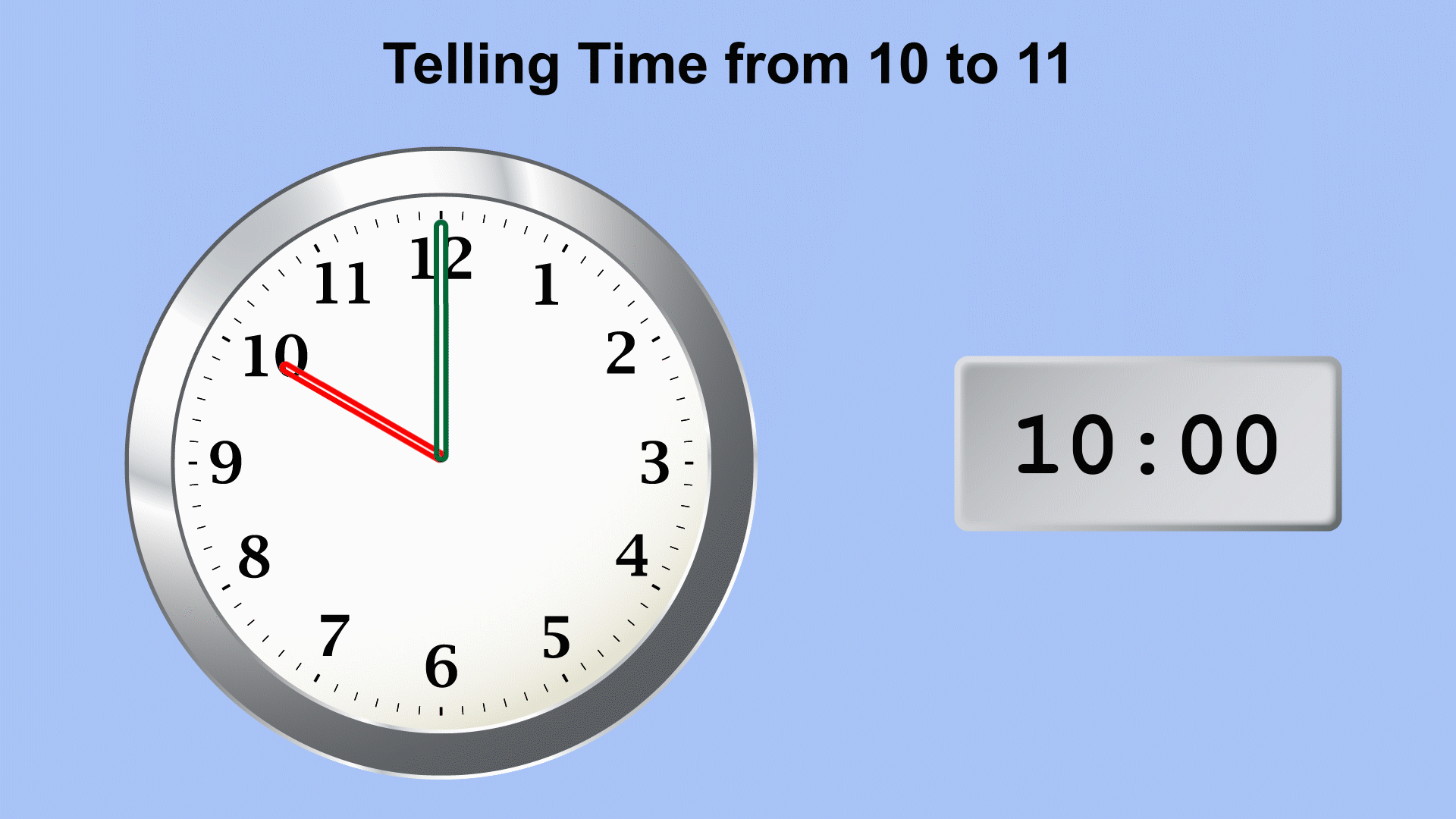
Display Title
Animated Math Clip Art--Clock Faces--From 10 to 11
Display Title
Animated Math Clip Art--Clock Faces--From 10 to 11

Topic
Telling Time
Description
This animated clip art illustrates a clock transitioning from 10 to 11, providing a clear visual representation of time change. The animation demonstrates the movement of the clock hands, which helps students visualize and understand the concept of telling time.
By incorporating this image into lessons, teachers can create an engaging learning environment. The animation, along with other clock face animations, serves as a valuable resource for teaching students how to read analog clocks and understand time intervals.
Animated math clip art is an effective educational tool because it enhances visual learning and helps students grasp complex concepts. These animations make learning math more interactive and enjoyable, catering to different learning styles.
Teacher's Script: "Watch how the clock hands move from 10 to 11. The minute hand completes a full circle, and the hour hand moves to the next hour. This animation helps us see how time is measured on a clock."
For a complete collection of animated math clip art related to Tell Time click on this link: Animated Clip Art: Telling Time Collection.
Telling Time
To review telling time, watch this video. (The transcript is also included.)
Video Transcript
When you look at a clock, you can read the hour and the minutes.
Here is a blank clock face.
Let's start by looking at the hour hand.
It is the shorter of the two clock hands and looks like this.
The hour hand varies in value from 1 to 12.
Here is a tour of times around the clock using the hour hand.
12 o'clock.
1 o'clock.
2 o'clock.
3 o'clock.
4 o'clock.
5 o'clock.
6 o'clock.
7 o'clock.
8 o'clock.
9 o'clock.
10 o'clock.
11 o'clock.
And back to 12 o'clock.
The minute hand is the longer of the two clock hands.
This is what it looks like.
The minute hand varies in value from 0 to 60.
Here is a tour of times around the clock in 5-minute increments.
5 minutes after the hour.
10 minutes after the hour.
15 minutes after the hour.
20 minutes after the hour.
25 minutes after the hour.
30 minutes after the hour.
35 minutes after the hour.
40 minutes after the hour.
45 minutes after the hour.
50 minutes after the hour.
55 minutes after the hour.
0 minutes after the hour.
Telling time involves reading both the hour and minute hand.
Here are some examples.
This is 12 o'clock. Both the hour and minute hands point to 12.
This is 12:15. The hour hand is a bit past 12 and the minute hand points to 3.
This is 12:30. The hour hand is between 12 and 1, and the minute hand points to 6.
This is 12:45. The hour hand is closer to 1 and the minute hand points to 9.
This is 1 o'clock. The hour hand points to 1 and the minute hand points to 12.
This pattern repeats for every hour and minute.
The Hour Hand
When you look at a clock, you can read the hour and the minutes. Here is a blank clock face.
Let’s start by looking at the hour hand. It is the shorter of the two clock hands and looks like this.
The hour hand varies in value from 1 to 12. Here are some sample times using the hour hand.
The Minute Hand
The minute hand is the longer of the two clock hands. This is what it looks like.
The minute hand varies in value from 0 to 60. Here are some sample times using the minute hand.
| Common Core Standards | CCSS.MATH.CONTENT.1.MD.B.3, CCSS.MATH.CONTENT.2.MD.C.7, CCSS.MATH.CONTENT.3.MD.A.1 |
|---|---|
| Grade Range | K - 2 |
| Curriculum Nodes |
Arithmetic • Measurement • Time |
| Copyright Year | 2022 |
| Keywords | clocks, time, time measurement, telling time |